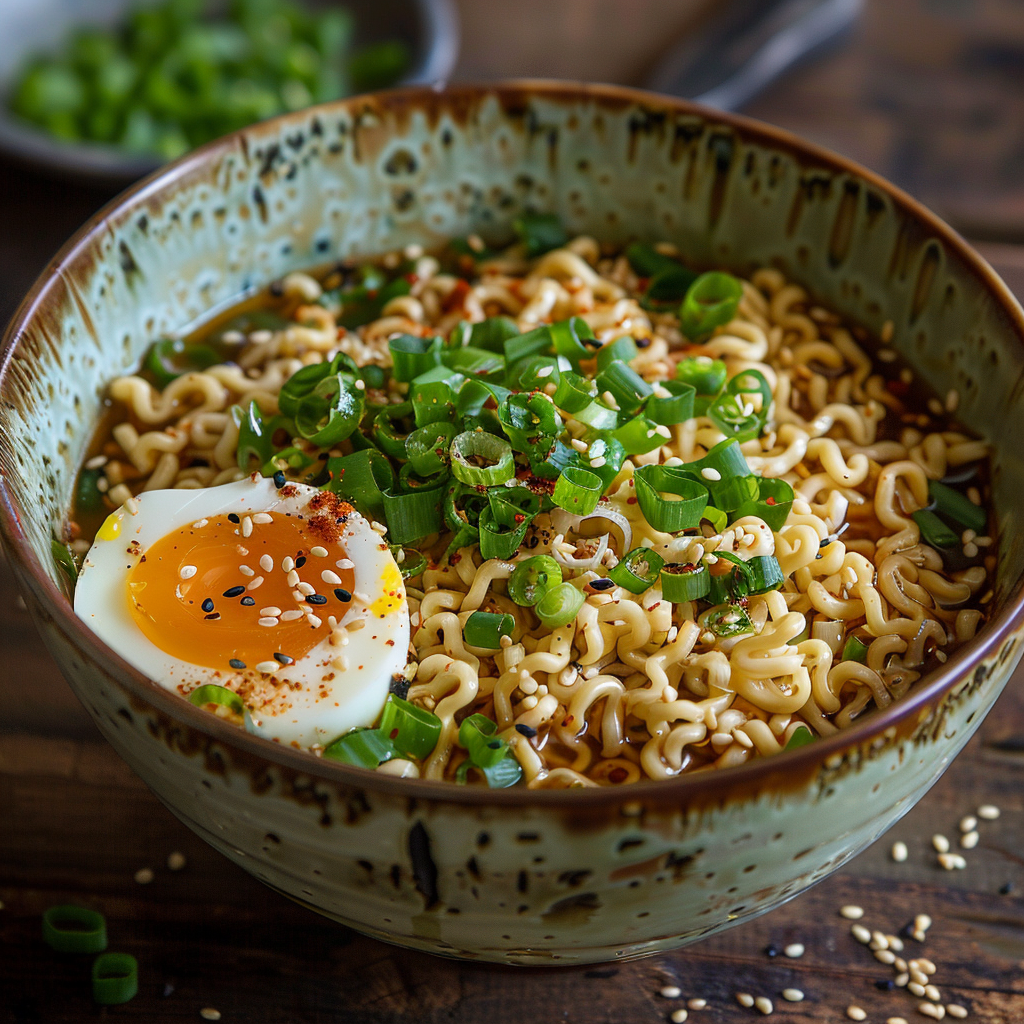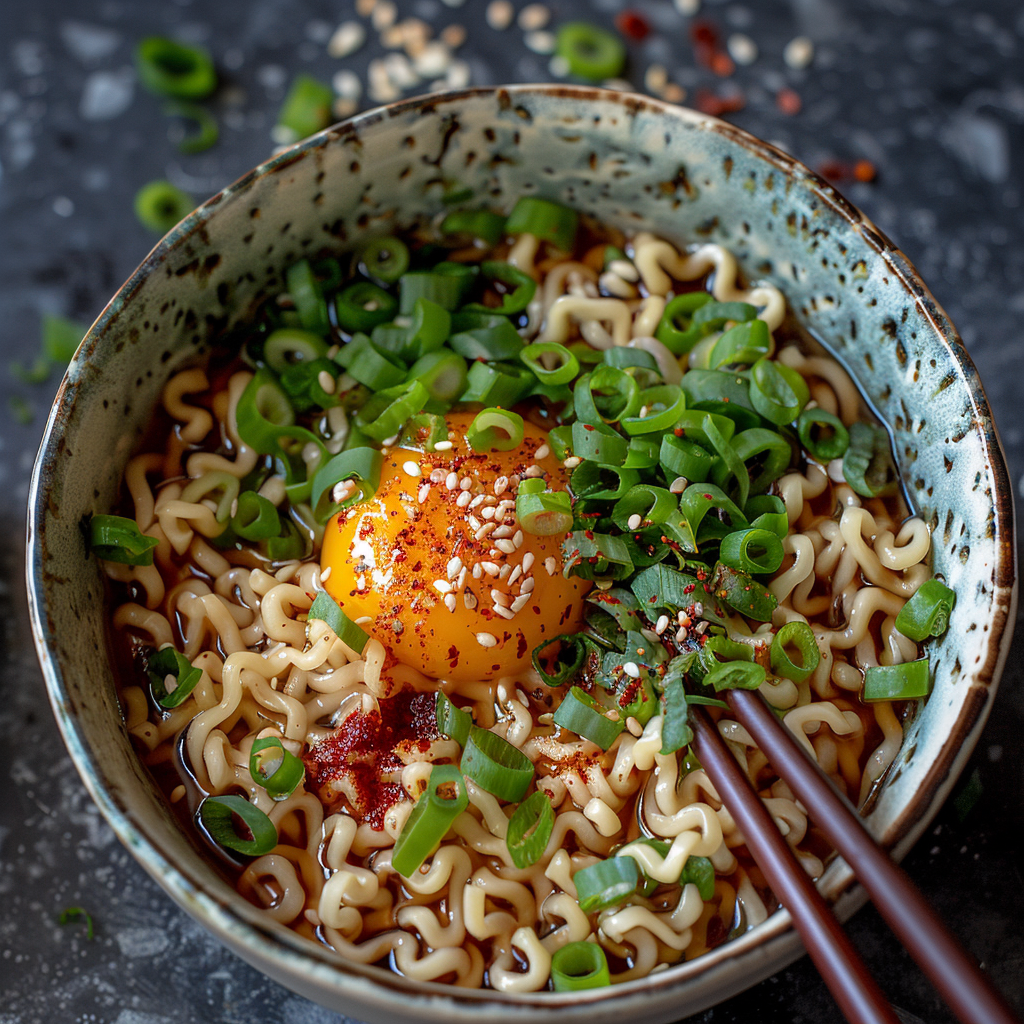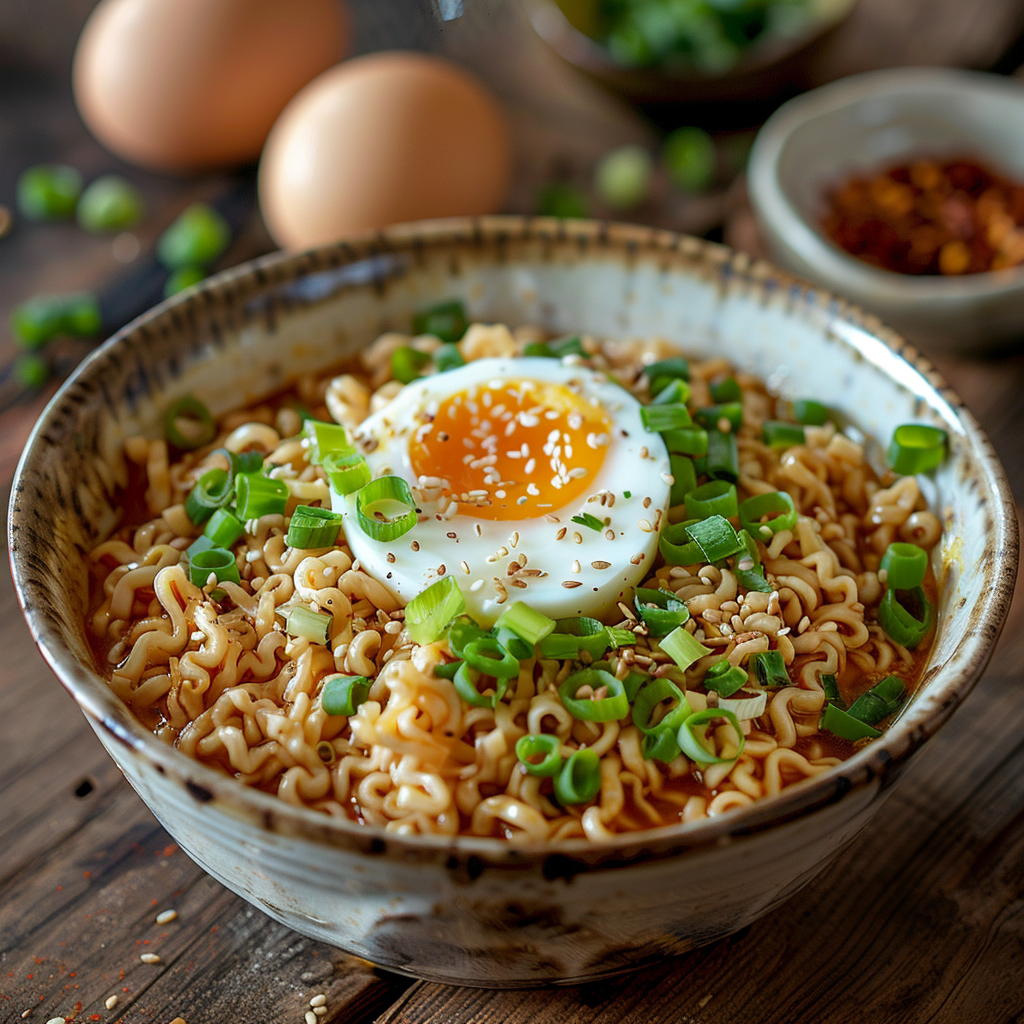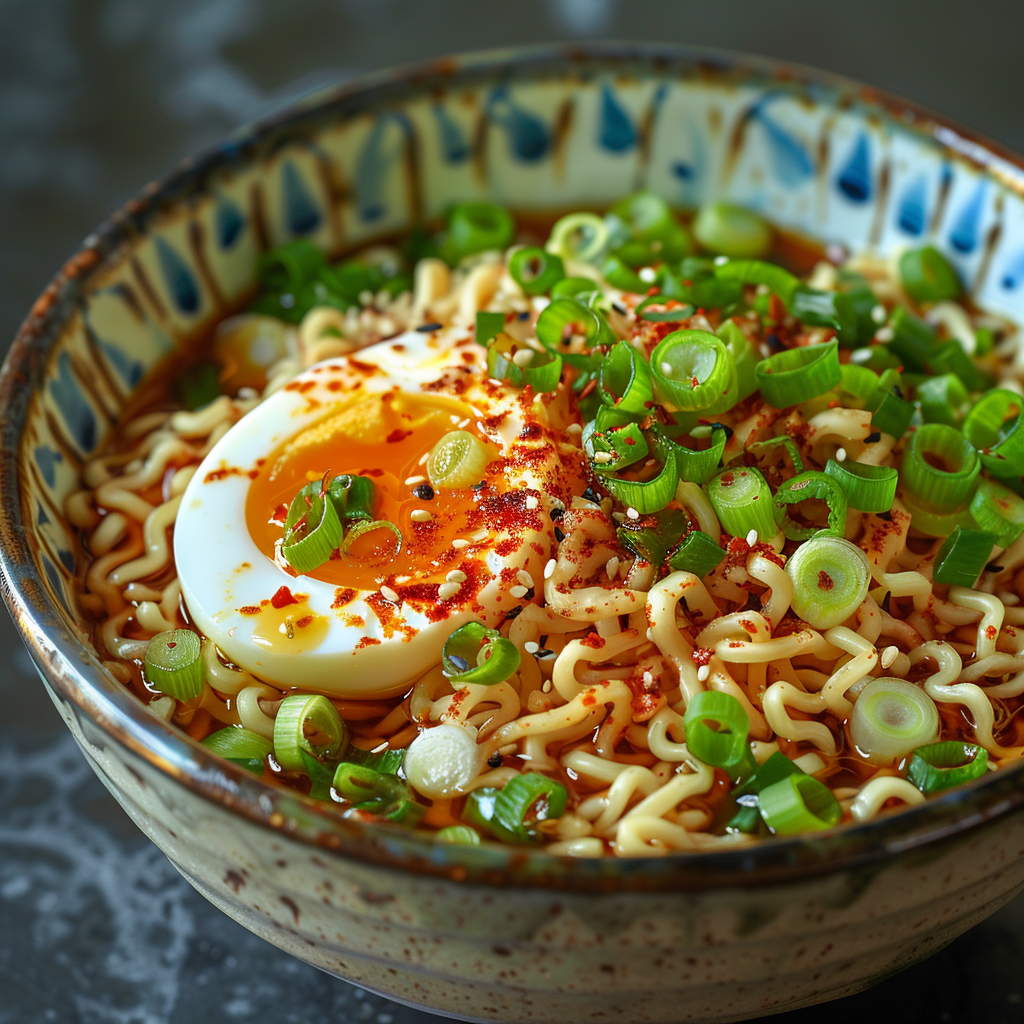Why Frozen Ramen Noodles Are a Game Changer
You know those days when you’re craving something warm and comforting but don’t want to spend hours in the kitchen? That’s exactly how I discovered frozen ramen noodles. It was a chilly evening, and my pantry was practically empty. All I had was a bag of frozen ramen noodles I’d picked up on a whim from Walmart. Little did I know, this humble find would become a family favorite. These noodles are pre-cooked, flash-frozen, and ready to transform into a delicious meal in minutes. Trust me, once you try them, you’ll wonder how you ever lived without them.
The Story Behind Frozen Ramen Noodles
Ramen has come a long way from its origins as a simple Japanese street food. Traditionally made with fresh noodles and rich broths, ramen has evolved into countless variations worldwide. Frozen ramen noodles are a modern twist on this classic dish. They’re designed for convenience without sacrificing flavor or texture. I first learned about them from a friend who works with a noodle manufacturer. She told me about Sun Noodle, a company famous for creating high-quality custom ramen noodles. Their frozen versions are a lifesaver for busy home cooks like me. Whether it’s a quick lunch or a cozy dinner, these noodles have saved the day more times than I can count.
Why You’ll Love This Recipe
What makes frozen ramen noodles so special? For starters, they’re incredibly versatile. You can customize them with your favorite toppings and sauces. Plus, they’re faster to prepare than fresh ramen noodles, which need careful handling. And let’s not forget the taste—these noodles have a chewy, springy texture that’s hard to beat. Whether you’re feeding your family or impressing friends, this recipe is sure to be a hit.
Perfect Occasions to Prepare This Recipe
Frozen ramen noodles are perfect for busy weeknights, casual hangouts, or even last-minute dinner parties. I’ve served them at game nights, potlucks, and even holiday gatherings. They’re also great for solo meals when you want something satisfying but don’t feel like cooking an elaborate dish. Pair them with a side salad or dumplings for a complete feast.
Ingredients
- 1 package of frozen ramen noodles
- 4 cups of water or broth (chicken, beef, or vegetable)
- 2 tablespoons soy sauce
- 1 tablespoon sesame oil
- 1 cup sliced vegetables (carrots, spinach, mushrooms, etc.)
- 1 soft-boiled egg (optional)
- Green onions and sesame seeds for garnish
Substitution Options
- Use tamari instead of soy sauce for a gluten-free option.
- Swap sesame oil with olive oil if you prefer a lighter flavor.
- Add tofu or chicken for extra protein.
- Try miso paste for a richer broth.
Preparation Section
Step 1: Boil the Broth
Pour 4 cups of water or broth into a large pot and bring it to a boil. I always use chicken broth for a savory base, but vegetable broth works just as well if you’re vegetarian. As the liquid heats up, you’ll notice tiny bubbles forming at the edges. This is the perfect time to add your seasonings. Stir in the soy sauce and sesame oil to create a flavorful foundation for your noodles.
Pro tip: Taste the broth before adding the noodles. Adjust the seasoning to suit your preferences.
Step 2: Cook the Noodles
Drop the frozen ramen noodles directly into the boiling broth. Unlike dry noodles, these don’t need to be thawed beforehand. Watch as they soften and separate, releasing their chewy goodness into the pot. The beauty of frozen noodles is that they cook evenly and quickly, usually in about 3-4 minutes. Stir gently to prevent sticking.
Chef’s tip: If you’re using Sun Noodle ramen, you’ll notice the texture is firmer and more authentic compared to store-bought alternatives.
Step 3: Add Vegetables and Toppings
Toss in your sliced vegetables during the last minute of cooking. This ensures they stay crisp and vibrant. Once everything is heated through, ladle the noodles and broth into bowls. Top each serving with a soft-boiled egg, green onions, and sesame seeds for a finishing touch. The golden yolk oozing over the noodles is pure magic.
Pro tip: Customize your bowl with toppings like nori sheets, chili oil, or pickled ginger for extra flair.
Timing
Prep time: 5 minutes
Cooking time: 10 minutes
Total time: 15 minutes
Chef’s Secret
To elevate your frozen ramen noodles, toast your sesame seeds in a dry skillet before sprinkling them on top. The nutty aroma adds an extra layer of flavor that ties everything together.
Extra Info
Did you know that fresh ramen noodles nutrition varies depending on the brand and preparation method? While they’re higher in carbs, you can balance the dish by adding plenty of vegetables and lean proteins. This makes it a wholesome meal that satisfies both your cravings and your nutritional needs.
Necessary Equipment
- Large pot
- Slotted spoon
- Knife and cutting board
- Ladle
Storage
If you have leftover frozen ramen noodles, store them in an airtight container in the fridge for up to 3 days. Reheat gently on the stovetop to avoid overcooking the noodles. Avoid freezing cooked noodles, as this can make them mushy.
For uncooked frozen noodles, keep them in the freezer until you’re ready to use them. They’ll stay fresh for several months. Always check the packaging for specific storage instructions.
When reheating, add a splash of broth or water to refresh the dish. This prevents the noodles from drying out and keeps the flavors intact.
Tips and Advice
- Always taste the broth before serving to ensure it’s seasoned properly.
- Experiment with different broths to find your favorite combination.
- Buy Sun Noodle ramen kits online or at specialty stores for a premium experience.
Presentation Tips
- Serve in wide, shallow bowls to showcase the colorful toppings.
- Arrange ingredients neatly for a restaurant-worthy look.
- Garnish with vibrant herbs like cilantro or parsley for a pop of color.
Healthier Alternative Recipes
Looking to make your frozen ramen noodles healthier? Try these variations:
- Zucchini Noodle Swap: Replace half the noodles with spiralized zucchini for added nutrients.
- Miso Broth: Use miso paste instead of soy sauce for a probiotic boost.
- Vegan Version: Skip the egg and use plant-based broth.
- Low-Sodium Option: Reduce the soy sauce and use low-sodium broth.
- Gluten-Free Twist: Choose gluten-free noodles and tamari.
- Protein-Packed Bowl: Add grilled chicken or shrimp for extra protein.
Common Mistakes to Avoid
Mistake 1: Overcooking the Noodles
Overcooking turns frozen ramen noodles mushy and ruins their texture. To avoid this, set a timer and remove them from the heat as soon as they’re tender. Remember, they’ll continue to cook slightly even after you take them off the stove.
Tip: Test one noodle for doneness before draining the rest.
Mistake 2: Skipping the Broth Seasoning
A bland broth makes the entire dish fall flat. Always season your broth generously with soy sauce, sesame oil, or spices. Taste it before adding the noodles to ensure it’s packed with flavor.
Tip: Keep a small bowl of broth handy while cooking to adjust seasoning as needed.
Mistake 3: Using Old Vegetables
Fresh veggies make all the difference in your ramen bowl. Avoid limp or wilted produce, as it won’t hold up well during cooking. Opt for crisp, vibrant vegetables for the best results.
Tip: Prep your veggies ahead of time to save effort on busy days.
FAQ
Where can I buy frozen ramen noodles?
You can find frozen ramen noodles walmart or at local grocery stores. Specialty shops and online retailers also carry premium options like Sun Noodle ramen kits.
How do I cook fresh ramen noodles?
Fresh noodles require shorter cooking times than dried ones. Boil them for 2-3 minutes, then drain and serve immediately. Avoid overcooking to maintain their texture.
Are frozen ramen noodles healthy?
While frozen ramen noodles are convenient, their nutritional value depends on the broth and toppings you use. Adding vegetables and lean proteins makes them a balanced meal.
Can I freeze cooked ramen noodles?
It’s not recommended to refreeze cooked noodles, as this affects their texture. Instead, store leftovers in the fridge and reheat them within a few days.
What are some creative toppings for ramen?
Try toppings like kimchi, corn kernels, or crispy garlic chips. Each adds unique flavors and textures to your bowl.
How do I make vegan ramen?
Omit animal-based ingredients and use plant-based broth. Add tofu, mushrooms, and plenty of veggies for a hearty vegan version.
Where can I find Sun Noodle products?
Check where to buy sun noodle ramen kits online or visit Asian markets in your area. Their website often lists authorized retailers.
Do frozen noodles taste as good as fresh ones?
High-quality frozen ramen noodles retain much of the texture and flavor of fresh noodles. Brands like Sun Noodle excel in this area.
Can I use frozen noodles in stir-fries?
Absolutely! Simply defrost them slightly and toss them into your stir-fry for a quick and tasty meal.
What’s the best way to store leftover broth?
Store leftover broth in a sealed container in the fridge for up to 3 days. Reheat gently before using.
Final Thoughts
Frozen ramen noodles are a lifesaver for anyone who loves delicious, hassle-free meals. With endless customization options and minimal prep time, they’re perfect for busy days or lazy evenings. Whether you stick to the classic recipe or experiment with healthier twists, these noodles are sure to become a staple in your kitchen. So grab a pack next time you’re at Walmart or browsing online, and let your creativity shine!

Frozen Ramen Noodles
Ingredients
Equipment
Method
- Pour 4 cups of water or broth into a large pot and bring it to a boil.
- Stir in the soy sauce and sesame oil into the boiling liquid.
- Drop the frozen ramen noodles directly into the boiling broth.
- Cook the noodles for about 3-4 minutes, stirring gently.
- Toss in the sliced vegetables during the last minute of cooking.
- Ladle the noodles and broth into bowls and top with a soft-boiled egg, green onions, and sesame seeds.



